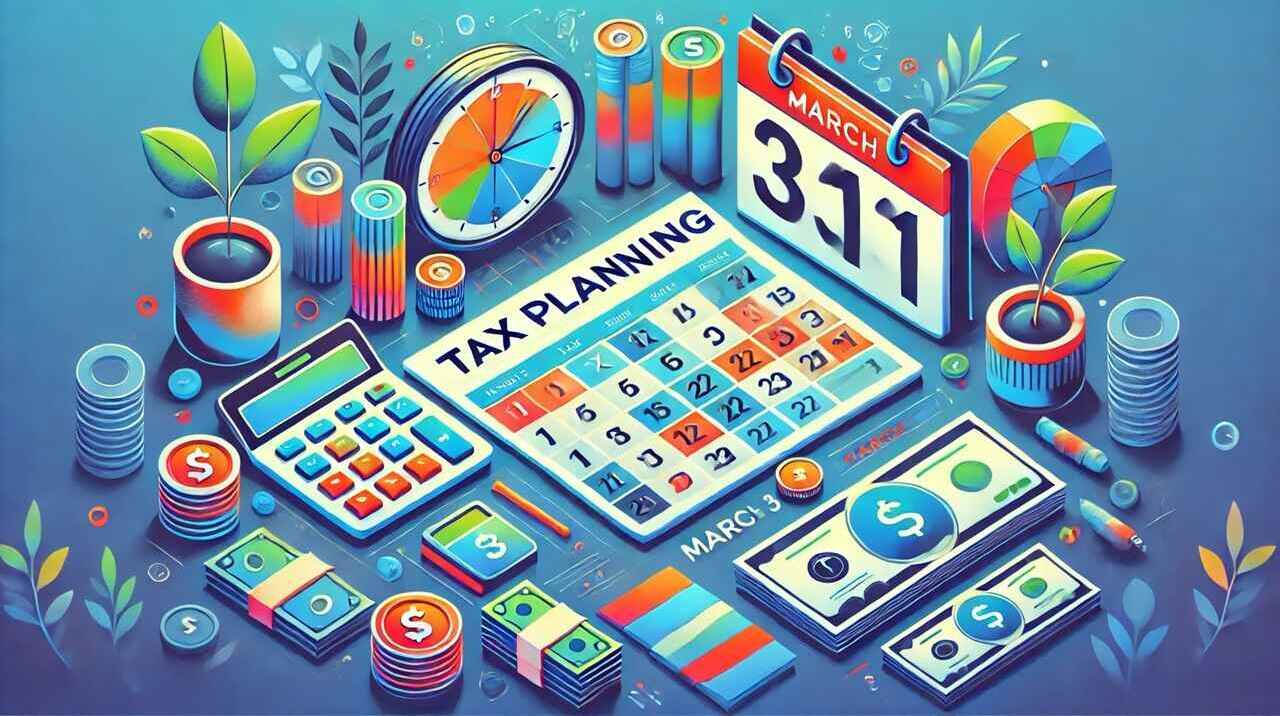As the Financial Year-Ed Approaches on March 31, Taxpayers need to take a final look at their finances to maximize tax saving and avoid last-minute hassles. Proper tax planning not only help in reduction tax Liability but also also ensures compliance with income tax laws. Whether you are a salaryed individual or a business owner, reviewing your tax-saving investments, deductions, deductions, and declarations can help optimize your tax outgo. Here are some Essential Tax Planning Tips to Consider Before The Financial Year Closes,
Tax Planning Tips Before Financial Year-Ed (March 31)

#1 – Utilize Section 80C Deductions
Section 80C of the Income Tax Act Allows deductions up to ₹ 1.5 lakh per financial year. If you haven’t fully utilized this limit, now is the time to invest in eligible instrances such as:
- Equity Linked Savings Scheme (ELSS)
- Public Provident Fund (PPF)
- Employee provident fund (EPF)
- National Savings Certificate (NSC)
- Life Insurance Premium
- Sukanya samriddhi yojana (ssy)
For instance, if you have invested only ₹ 1 lakh so far, you can still invest ₹ 50,000 more in Els or PPF to Claim the full deduction.
#2 – Maximize nps benefits under section 80ccd (1b)
Apart from 80C, you can get an additional deduction of ₹ 50,000 under section 80ccd (1B) by investment in the National Pension System (NPS). This is a great way to Reduce Taxable Income While Securing Retirement Benefits. In case your account is freezed, you can check this article on How to Unfreeze NPS Account,
#3 – Claim Health Insurance Benefits Under Section 80D
Health Insurance Premiums Paid for Self, Family, and Parents are eligible for deductions under section 80D:
- UP to ₹ 25,000 for Self, Spouse, And Children (₹ 50,000 If the Insured is a Senior Citizen)
- An additional ₹ 25,000 for parents (₹ 50,000 if parents are seniors)
For example, if you paid ₹ 30,000 towards your parents’ health insurance and they are Senior Citizens, You Can Claim ₹ 30,000 as a deeduction under 80D, effectively Reducing will taxable income.
#4 – Submit Proofs for Hra and Other Allowances
If you are a salaryed employee recepta allowance (HRA), Ensure You Submit Rent Receipts to Claim Tax Benefits. Also, check if you have other examptions like Leave Travel Allowance (LTA), which require Submission of Bills Before the Financial Year-Ed.
#5 – Review Capital Gains and Set Off Losses
If you have made capital gains from stocks or mutual funds, consider booking losses in some investments to offset the Gains. This strategy, Called Tax-Loss Harvesting, Helps Reduce Your Tax Liability on Capital Gains.
For instance, if you made a short-term capital gain of ₹ 1 Lakh on Equity Mutual Funds but have a loss of ₹ 50,000 from Another Stock Investment, You Can Book The Loss and REDUCE Your TAXABLE CAN BOUK TATHER SHE LOSS and You can book the loss and have 50,000. You can purchase them after a week again as it would be treated as fresh investment now.
#6-OPT for Tax-Saving Fixed Deposits and SSY ETC for Safe Investments
If you prefer Safer Investment Options, You Can Invest in A 5-YAR TAX-Saving Fixed Deposit (FD), PPF or Sukanya Samriddhi Yojana (SSY) for Your Daughter Before March 31. Ction 80C and Provide Risk-Free Returns.
#7 – Pay Advance Tax to avoid penalties
If your Total Tax Liability Exceds ₹ 10,000 in a Financial Year, Ensure that you have paid at least 90% of of it as advance tax by March 15 to Avoid PenalTies Under Section 234B and 234C.
For example, if your estimated tax labor is ₹ 1 lakh and you have paid only ₹ 70,000, you should pay an additional ₹ 20,000 before March 15 to meet the 90% requirement.
#8 – Check for Donations Under Section 80G
If you have made donations to eligible charities or plan to, ensure you get the recepts and claim deductions under section 80g. Some Donations Qualify for a 50% or 100% Deduction, Reducing Your Taxable Income Significantly.
#9 – Submit Proofs of Tax Saving Investments
Many employers ask employees to submit proof of tax-saving investments before March 31. If you haven’t done this yet, ensure you submit the necessary documents to avoid higher TDS deductions from your salary in March. If you have home loan, you can check How to Download Home Loan Interest Certificate for Tax Proofs Submission,
#10 – Choose Between old and new tax regime
The new tax regime offers lower tax rates but removes most deductions. Before March 31, Analyze which regime benefits you more and plan your tax-saving investments according. While this is not useful for the financial year (as corporates do not accept employees changing at the end of the financial year)
For instance, if you have fewer deductions to claim, the new tax regime may be more benefit. However, if you have significant investments under 80c, 80D, and hra benefits, the old regime might be better.
Conclusion: Proactive Tax Planning Before March 31 Can Help You Save on Taxes While Securing Your Financial Future. Take time to review your deductions, Submit Necessary Documents, and Invest Wisely to Maximize Tax Benefits. Waiting until the last minute can lead to missed options and unnecessary tax outflows. Start Now and Ensure Your Finance are in Order Before The Financial Year Ends!
Discover more from myinvestmentideas.com
Subscribe to get the latest posts sent to your email.
(Tagstotranslate) Tax planning

